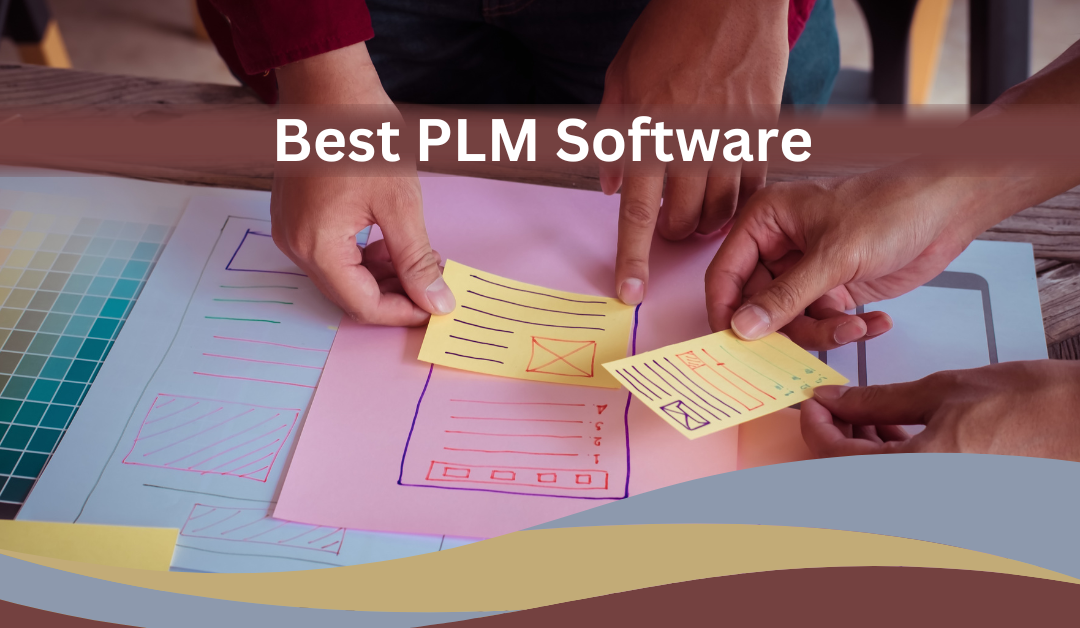In the dynamic landscape of product lifecycle management (PLM), businesses seek innovative solutions to streamline processes and enhance collaboration. The quest for the best PLM software involves evaluating tools that seamlessly integrate into workflows, driving efficiency and ensuring a competitive edge. Here, we explore three standout PLM solutions known for their robust features, user-friendly interfaces, and ability to adapt to the evolving needs of modern enterprises.
InnoPLM Pro Suite:
InnoPLM Pro Suite emerges as a top-tier PLM software renowned for its comprehensive tools covering the entire product lifecycle. This solution facilitates collaboration among cross-functional teams, fostering real-time communication and data sharing. Its intuitive interface and customizable dashboards empower users to precisely and efficiently manage complex product data, from design inception to end-of-life considerations.
OptiTech Nexus 360:
OptiTech Nexus 360 stands out as a versatile PLM solution designed to address the intricate demands of modern product development. Noteworthy for its advanced analytics capabilities, Nexus 360 empowers organizations to glean actionable insights from product data, aiding in informed decision-making. With a focus on user experience, this software ensures a seamless integration process, promoting collaboration across design, manufacturing, and supply chain functions.
ProSync CollaboratePro:
ProSync CollaboratePro earns its place among the best PLM software by strongly emphasizing fostering collaboration and accelerating product development cycles. CollaboratePro connects dispersed teams, enabling them to work cohesively on design iterations, revisions, and updates in real-time, ultimately enhancing overall product quality and time to market.
These three PLM solutions represent the forefront of technological innovation, catering to the diverse needs of businesses navigating the complexities of product lifecycle management. As organizations strive for operational excellence and sustained growth, choosing PLM software plays a pivotal role in shaping their ability to innovate, collaborate, and efficiently bring high-quality products to market.
List Of the Top10 PLM Software
In the dynamic landscape of product development, Product Lifecycle Management (PLM) software plays a pivotal role in streamlining processes, enhancing collaboration, and ensuring the successful lifecycle management of products. Choosing the right PLM software becomes imperative as businesses strive for efficiency, innovation, and competitiveness. Here’s a curated list of the top 10 PLM solutions, each accompanied by a brief description:
List Here:
1. InnoPLM Pro Suite offers comprehensive PLM solutions, facilitating collaboration, product data management, and workflow optimization. It excels in managing complex product information throughout its lifecycle.
2. OptiTech Nexus 360 provides a collaborative environment for global product development, enabling real-time collaboration, data sharing, and efficient management of product data and processes.
3. ProSync CollaboratePro stands out with its robust PLM capabilities, covering product data management, change management, and advanced analytics. It fosters collaboration and enhances product quality.
4. Autodesk Fusion Lifecycle:
Autodesk Fusion Lifecycle offers cloud-based PLM that focuses on collaboration and data management. It simplifies processes from concept to production, fostering agility in product development.
5. Arena Solutions:
Arena Solutions is a cloud-based PLM platform designed for small to midsize enterprises. It emphasizes collaboration, document management, and regulatory compliance throughout the product lifecycle.
6. SAP PLM:
SAP PLM integrates with other SAP modules, providing a holistic approach to product lifecycle management. It spans creativity, design, and manufacturing processes, ensuring data consistency across the organization.
7. Oracle Agile PLM:
Oracle Agile PLM is known for its flexibility and scalability. It supports collaboration, change management, and compliance, making it suitable for diverse industries with complex product development needs.
8. Aras Innovator:
Aras Innovator offers an open-source, scalable PLM platform. Its focus is on flexibility, allowing organizations to adapt and extend PLM processes according to their unique requirements.
9. Infor PLM:
Infor PLM is a user-friendly solution with capabilities ranging from product design to manufacturing. It promotes collaboration, accelerates product development, and enhances overall efficiency.
10. Onshape:
Onshape is a cloud-based PLM solution that integrates seamlessly with computer-aided design (CAD) tools. It facilitates real-time collaboration and version control for efficient product development.
Selecting the right PLM software involves considering specific business needs, scalability, integration capabilities, and user-friendliness. This list is a starting point for businesses seeking robust solutions to optimize their product development processes and enhance overall competitiveness.
Reviews of Best PLM Software
In the dynamic landscape of product development, utilizing the best Product Lifecycle Management (PLM) software is crucial for streamlining processes and enhancing overall efficiency. These advanced PLM solutions offer many advantages that transcend traditional methods, empowering businesses to thrive in competitive markets.
Implementing the best PLM software facilitates seamless collaboration among cross-functional teams, breaking down silos and fostering a cohesive working environment. This centralized platform is a unified repository, consolidating product information and ensuring real-time accessibility for all stakeholders. The result is improved communication, reduced errors, and accelerated decision-making processes.
Furthermore:
PLM software enhances innovation by providing a comprehensive product lifecycle view. This visibility allows organizations to identify areas for improvement, optimize workflows, and ultimately drive innovation. From concept to retirement, PLM tools enable businesses to control every product development phase, ensuring that products meet or exceed customer expectations.
In addition to fostering collaboration and innovation, PLM software contributes to efficient resource utilization. By centralizing data and automating workflows, organizations can eliminate redundancies, minimize manual errors, and optimize resource allocation. This, in turn, leads to cost savings and increased productivity throughout the product development lifecycle.
Moreover, the best PLM solutions empower businesses to adapt swiftly to changing market demands. Organizations can respond to market dynamics, customer feedback, and emerging trends with agility through version control and change management features. This adaptability is crucial in today’s fast-paced business environment, allowing companies to stay competitive and relevant.
Ultimately, the advantages of the best PLM software extend beyond operational improvements; they contribute to businesses’ overall success and sustainability in an ever-evolving market. From enhancing collaboration to driving innovation and optimizing resource utilization, these PLM tools play a pivotal role in shaping the future of product development across industries.
InnoPLM Pro Suite
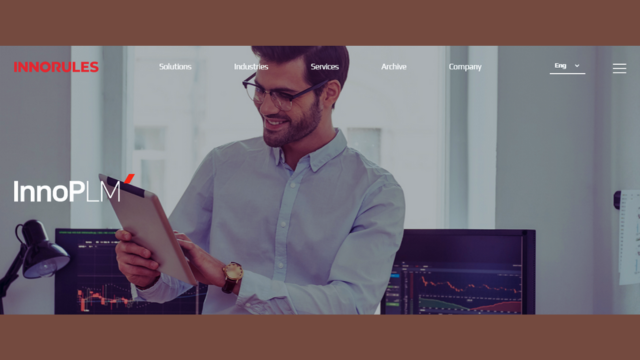
InnoPLM Pro Suite is a leading product lifecycle management (PLM) software that offers a comprehensive solution for organizations seeking efficient and streamlined product development processes. Here are five key advantages that make InnoPLM Pro Suite a standout choice:
Seamless Collaboration :
InnoPLM Pro Suite excels at fostering seamless collaboration among cross-functional teams. The software provides a centralized platform where groups can collaborate in real-time, enhancing communication and ensuring everyone involved in the product lifecycle is on the same page. This collaborative environment promotes efficiency, reduces errors, and accelerates development.
End-to-End Visibility :
One of the standout features of InnoPLM Pro Suite is its ability to offer end-to-end visibility into the product lifecycle. From initial ideation to design, manufacturing, and beyond, the software provides a holistic view of every stage. This visibility gives decision-makers the information to optimize processes, identify bottlenecks, and make strategic decisions.
Configurability and Flexibility :
InnoPLM Pro Suite distinguishes itself with its high degree of flexibility. Organizations can tailor the software to their specific needs and workflows. This adaptability ensures the PLM solution aligns seamlessly with unique business processes, allowing for a more efficient and customized product development journey.
Robust Data Management :
The software excels in robust data management, offering a secure and organized repository for all product-related information. InnoPLM Pro Suite ensures data is easily accessible, version-controlled, and protected throughout its lifecycle. This meticulous data management contributes to improved accuracy, reduced errors, and compliance with industry regulations.
Innovative Analytics and Reporting :
InnoPLM Pro Suite goes beyond basic PLM functionalities by incorporating innovative analytics and reporting tools. Organizations can gain valuable insights into performance metrics, project timelines, and resource utilization. These analytics empower decision-makers to identify areas for improvement, optimize processes, and drive continuous innovation within the product development lifecycle.
In conclusion, InnoPLM Pro Suite emerges as a robust PLM solution, offering a range of features that enhance collaboration, visibility, data management, and analytics. This comprehensive tool proves instrumental in achieving a more efficient and successful product development journey for organizations across various industries.
Pros:
1. Streamlines product lifecycle, enhancing collaboration and innovation among teams.
2. Offers robust tools for efficient data management and version control.
3. Provides customizable modules catering to diverse industry-specific needs.
4. Facilitates seamless integration with existing software, optimizing workflow efficiency.
Cons:
1. Steep learning curve for new users due to complex functionalities.
2. High initial investment might be a barrier for smaller businesses.
3. Limited compatibility with specific legacy systems or software.
4. Requires dedicated IT support for implementation and maintenance.
OptiTech Nexus 360

Selecting the proper Product Lifecycle Management (PLM) software is paramount for efficient product development and management. OptiTech Nexus 360 emerges as a top contender in the market, offering comprehensive features to streamline the entire product lifecycle. Let’s delve into five key strengths that make OptiTech Nexus 360 stand out:
Intuitive User Interface:
OptiTech Nexus 360 boasts an intuitive and user-friendly interface, enhancing user adoption and reducing the learning curve. The software’s design prioritizes accessibility, ensuring users across various roles can navigate the platform seamlessly.
End-to-End Collaboration:
Facilitating seamless collaboration across teams and departments, OptiTech Nexus 360 breaks down silos in the product development process. Its collaborative features enable real-time communication, fostering teamwork and ensuring everyone stays on the same page throughout the product lifecycle.
Robust Version Control:
OptiTech Nexus 360 excels in version control, which is crucial for efficiently managing product data changes. With a robust version control system, the software ensures the team works with the latest and most accurate product information, reducing errors and enhancing overall product quality.
Advanced Analytics and Reporting:
OptiTech Nexus 360 integrates advanced analytics and reporting tools to elevate decision-making processes. These features provide valuable insights into product performance, user behaviour, and market trends, empowering organizations to make informed strategic decisions.
Scalability and Flexibility:
OptiTech Nexus 360 is designed with scalability in mind, catering to businesses of various sizes. Whether a startup or an enterprise, the software adapts to evolving needs and scales seamlessly. Its flexibility accommodates different industries, making it a versatile solution for diverse product development scenarios.
In conclusion, OptiTech Nexus 360 emerges as a robust PLM software solution, offering an intuitive interface, fostering collaboration, ensuring version control, providing advanced analytics, and showcasing scalability. These strengths position OptiTech Nexus 360 as a comprehensive tool for organizations optimizing their product lifecycle management processes.
Pros:
1. Enhances collaboration, streamlining communication across product development teams.
2. Robust features for product lifecycle management, ensuring comprehensive project oversight.
3. Intuitive interface facilitates user adoption and efficient workflow management.
4. Scalability to accommodate growing project complexities and evolving organizational needs.
Cons:
1. Initial implementation may pose challenges, requiring thorough planning and training.
2. Integration with existing systems might necessitate additional customization efforts.
3. Potential for occasional system performance issues during peak usage periods.
4. Cost considerations, as OptiTech Nexus 360 might be on the higher end.
ProSync CollaboratePro
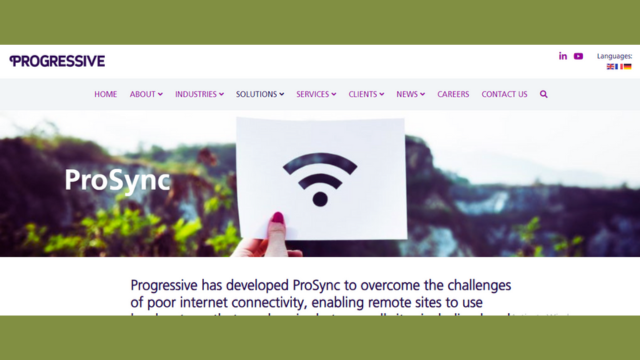
In the dynamic landscape of product lifecycle management (PLM) software, ProSync CollaboratePro stands out as a robust solution, offering myriad benefits to organizations striving for efficient product development and management.
Seamless Collaboration :
ProSync CollaboratePro excels in fostering seamless collaboration across teams, breaking down silos and enhancing communication. Its intuitive interface facilitates real-time collaboration, allowing teams to work cohesively on projects irrespective of geographical location.
Comprehensive Data Management :
One of the critical strengths of CollaboratePro lies in its comprehensive data management capabilities. The software provides a centralized repository for all product-related data, ensuring version control, accessibility, and traceability. This feature streamlines workflows and reduces the risk of errors.
Configurability and Flexibility :
Tailoring the PLM system to specific organizational needs is a breeze with ProSync CollaboratePro. The software offers high, allowing users to adapt the system to unique workflows and changing requirements. This flexibility ensures that the PLM solution evolves with the organization.
Advanced Analytics and Reporting :
ProSync CollaboratePro empowers decision-makers with advanced analytics and reporting tools. This feature provides valuable insights into product development processes, helping teams make informed decisions, optimize workflows, and identify areas for improvement.
Integration Capabilities :
CollaboratePro seamlessly integrates with various third-party tools and enterprise systems, enhancing its compatibility with existing workflows. This integration capability ensures that organizations can leverage their existing tech stack while benefitting from the advanced features of ProSync CollaboratePro.
In conclusion, ProSync CollaboratePro emerges as a top-tier PLM solution, offering features that streamline collaboration, enhance data management, provide reconfigurability, deliver insightful analytics, and seamlessly integrate with existing systems. For organizations seeking comprehensive and adaptable PLM software, ProSync CollaboratePro proves to be a valuable asset in navigating the complexities of modern product development.
Pros:
1. Streamlines collaboration, enhancing team productivity and project efficiency significantly.
2. Offers a user-friendly interface, simplifying the learning curve for users.
3. Facilitates real-time communication, fostering seamless interactions among team members.
4. Provides robust security measures, safeguarding sensitive project data effectively.
Cons:
1. A complex implementation process may lead to initial setup challenges.
2. Limited customization options might not suit highly specialized workflows.
3. Dependency on internet connectivity might hinder accessibility in remote areas.
4. Higher pricing tiers could be restrictive for smaller businesses’ budgets.
Autodesk Fusion Lifecycle
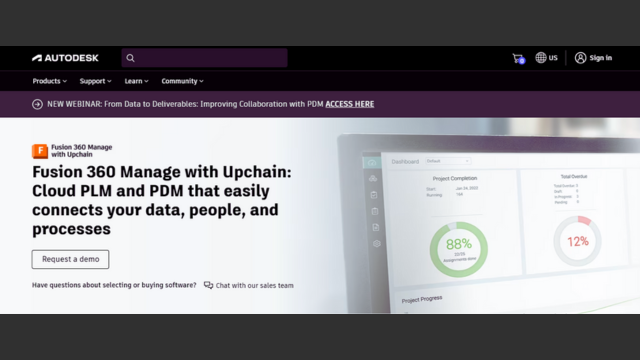
Autodesk Fusion Lifecycle is a premier product lifecycle management (PLM) software that offers a comprehensive suite of features to streamline product development processes. Here are five key advantages that make Autodesk Fusion Lifecycle a top choice in the PLM software landscape.
Intuitive Collaboration :
Autodesk Fusion Lifecycle excels in fostering collaboration among cross-functional teams. Its intuitive interface and cloud-based platform enable seamless communication and information sharing throughout the product lifecycle. This collaborative environment enhances team efficiency and accelerates decision-making processes.
End-to-End Visibility :
One of the standout features of Autodesk Fusion Lifecycle is its end-to-end visibility into the entire product lifecycle. Users can track and monitor every stage of product development, from initial design to manufacturing. This transparency facilitates better decision-making, risk management, and overall project control.
Customizable Workflows :
Tailoring workflows to meet specific organizational needs is a strength of Autodesk Fusion Lifecycle. The software allows users to customize processes and workflows to align with unique business requirements. This adaptability ensures that the PLM solution integrates seamlessly into existing workflows, optimizing efficiency without compromising flexibility.
Cloud-Based Accessibility :
Offering the advantage of cloud-based accessibility, Autodesk Fusion Lifecycle enables users to access critical product data anytime, anywhere. This feature is particularly beneficial for globally distributed teams, providing real-time collaboration and ensuring stakeholders stay connected regardless of geographical location.
Comprehensive Data Management :
Autodesk Fusion Lifecycle excels in comprehensive data management, providing a centralized repository for all product-related information. It includes documents, designs, and other relevant data, ensuring that teams can make informed decisions based on accurate and up-to-date information. This centralized approach streamlines data access and reduces the risk of errors associated with disparate data sources.
In conclusion, Autodesk Fusion Lifecycle emerges as a leading PLM software due to its emphasis on collaboration, visibility, customization, cloud-based accessibility, and robust data management capabilities. These features collectively position the software as a valuable asset for organizations seeking to optimize their product development processes.
Pros
1. Streamlines processes, enhancing collaboration and workflow efficiency for teams.
2. Offers cloud-based accessibility, enabling remote work and real-time updates.
3. Provides comprehensive data management, centralizing information for easier access.
4. Customizable, adapting to various business needs and process requirements.
Cons
1. Steeper learning curve for new users due to its robustness.
2. Integration complexities with other software or legacy systems may arise.
3. Requires consistent internet access due to its cloud-based nature.
4. Pricing might be higher compared to some other PLM solutions.
Arena Solutions
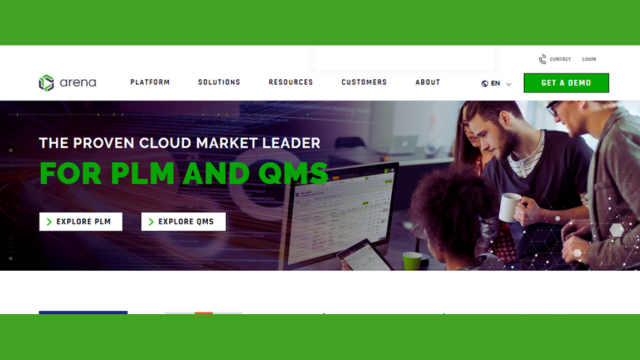
Selecting the proper Product Lifecycle Management (PLM) software is crucial for businesses aiming to streamline their product development processes and enhance collaboration. Arena Solutions emerges as a robust contender in the PLM landscape, offering a comprehensive suite of features. Let’s delve into the notable advantages that set Arena Solutions apart.
Integration and collaboration:
Arena Solutions excels in seamless integration, fostering collaboration across teams and departments. Its platform facilitates real-time communication and information sharing, breaking down silos and ensuring a cohesive product development environment.
Cloud-Based accessibility:
One of Arena Solutions’ strengths lies in its cloud-based architecture. It allows users to access critical PLM data from anywhere, fostering flexibility and enabling teams to work collaboratively, whether they are in the office or remote locations.
Change Management Excellence:
Efficient change management is a cornerstone of Arena Solutions. The software provides a structured and transparent approach to handling changes throughout the product lifecycle, ensuring that modifications are tracked, documented, and implemented seamlessly.
Compliance and Regulatory Support:
Arena Solutions prioritizes compliance and regulatory adherence. It offers robust features to manage documentation and processes in alignment with industry standards and regulations. It is particularly crucial for businesses operating in regulated sectors.
Lifecycle Traceability:
The PLM software excels in providing end-to-end lifecycle traceability. Arena Solutions enables organizations to track every stage of a product’s lifecycle, from concept to retirement, ensuring transparency and accountability. This comprehensive traceability contributes to better decision-making and risk management.
In conclusion, Arena Solutions is a top-tier PLM software emphasizing integration, cloud-based accessibility, change management, compliance support, and lifecycle traceability. These strengths position Arena Solutions as a valuable asset for businesses striving for efficiency and innovation in their product development processes.
Pros:
1. Arena Solutions offers robust collaboration for streamlined product development processes.
2. Its cloud-based platform provides accessibility and real-time collaboration benefits.
3. Configurable workflows enhance flexibility in adapting to unique project requirements.
4. Integration capabilities with other enterprise systems for seamless data flow.
Cons:
1. Arena Solutions may have a steeper learning curve for new users.
2. Customization options might be limited compared to some other PLM solutions.
3. The cost of implementation and licensing could be a significant investment.
4. Some users report occasional issues with system performance and responsiveness.
SAP PLM
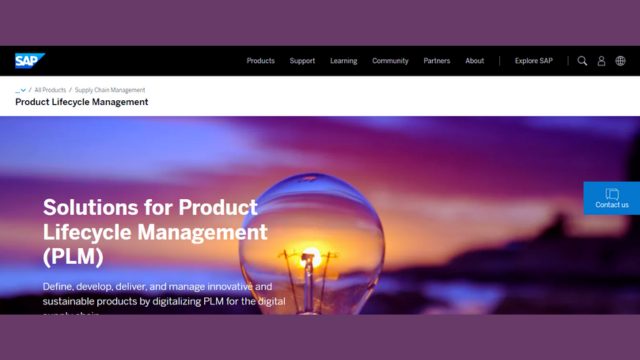
In the realm of Product Lifecycle Management (PLM) software, SAP PLM stands out as a robust solution with many advantages. Let’s explore five key pros that make SAP PLM a top-tier choice for businesses seeking effective PLM solutions.
Comprehensive Product Data Management (PDM):
SAP PLM excels in PDM, offering a centralized repository for product data. t ensures all stakeholders can access accurate and up-to-date information, fostering collaboration and minimizing errors.
Integrated Collaboration and Workflow:
SAP PLM integrates with various enterprise systems to facilitate seamless collaboration. Its robust workflow capabilities streamline processes, enabling teams to work cohesively across different product lifecycle stages. This integration enhances efficiency and accelerates time to market.
Advanced Change Management:
SAP PLM provides sophisticated change management features. Through systematic change control processes, businesses can efficiently manage alterations to product designs or specifications. This ensures that changes are implemented while maintaining compliance and quality standards.
Regulatory Compliance and Risk Management:
A standout feature of SAP PLM is its capability to support regulatory compliance. It aids organizations in adhering to industry-specific regulations and standards. Additionally, the software facilitates risk management, allowing businesses to identify and mitigate potential risks throughout the product lifecycle.
In-depth Analytics and Reporting:
SAP PLM offers robust analytics and reporting tools, providing valuable insights into product-related data. Businesses can leverage these capabilities to make informed decisions, optimize processes, and enhance product performance. The software’s analytical prowess contributes significantly to strategic planning and continuous improvement.
In conclusion, SAP PLM emerges as a comprehensive and sophisticated PLM solution, addressing the diverse needs of businesses across industries. Its PDM, collaboration, change management, compliance, and analytics strengths make it a compelling choice for organizations seeking to enhance their product development and management processes.
Pros
1. Offers extensive functionalities for product lifecycle management efficiency.
2. Integrates seamlessly with SAP’s other enterprise resource planning solutions.
3. Provides robust analytics and reporting capabilities for informed decision-making.
4. Enables collaboration among cross-functional teams for streamlined processes.
Cons
1. High implementation and customization costs for smaller businesses.
2. A steep learning curve requires significant training and expertise.
3. Customizations might lead to complexities in system maintenance.
4. Upgrades and updates can be intricate, potentially disrupting operations.
Oracle Agile PLM
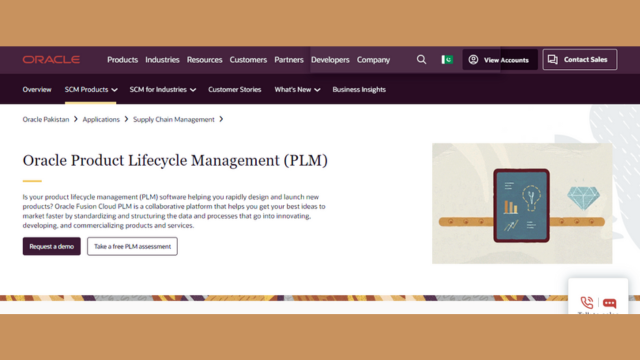
In Product Lifecycle Management (PLM) software, Oracle Agile PLM stands out as a robust solution tailored to streamline product development processes and enhance overall efficiency.
Comprehensive Product Data Management (PDM):
Oracle Agile PLM excels in offering a comprehensive PDM system, ensuring seamless management of product data throughout its lifecycle. It includes efficient version control, documentation, and collaboration among cross-functional teams.
Advanced Change Management Capabilities:
The software provides advanced change management functionalities, facilitating the smooth handling of product design, materials, or specifications changes. It ensures that modifications are tracked, evaluated, and implemented precisely, minimizing errors and disruptions.
Integrated Supplier Collaboration:
Oracle Agile PLM promotes effective supplier collaboration, fostering communication and transparency in the supply chain. This integration allows for real-time information exchange, helping to align suppliers with product development goals and ensuring a synchronized workflow.
Regulatory Compliance and Quality Management:
Ensuring compliance with regulatory standards is a critical aspect of product development. Oracle Agile PLM incorporates robust features for regulatory compliance and quality management, assisting organizations in adhering to industry regulations and maintaining high product quality standards.
Powerful Analytics and Reporting Tools:
Oracle Agile PLM comes equipped with powerful analytics and reporting tools, providing insights into various aspects of the product lifecycle. These tools enable data-driven decision-making, helping organizations optimize processes, identify bottlenecks, and enhance efficiency.
In conclusion, Oracle Agile PLM is a comprehensive PLM solution that addresses critical product development and lifecycle management challenges. Its prowess in PDM, change management, supplier collaboration, regulatory compliance, and analytics positions it as a top choice for businesses seeking robust PLM software to drive innovation and maintain a competitive edge in the market.
Pros:
1. Oracle Agile PLM streamlines product development for enhanced efficiency.
2. It provides comprehensive visibility into the entire product lifecycle process.
3. Agile PLM facilitates collaboration among cross-functional teams for improved communication.
4. The software offers robust tools for regulatory compliance and quality management.
Cons:
1. Implementation can be complex, requiring careful planning and resources.
2. Customization may lead to additional costs and potential system complexities.
3. Some users find the interface less intuitive, requiring training efforts.
4. Ongoing maintenance costs can be relatively high, impacting the total cost of ownership.
Aras Innovator
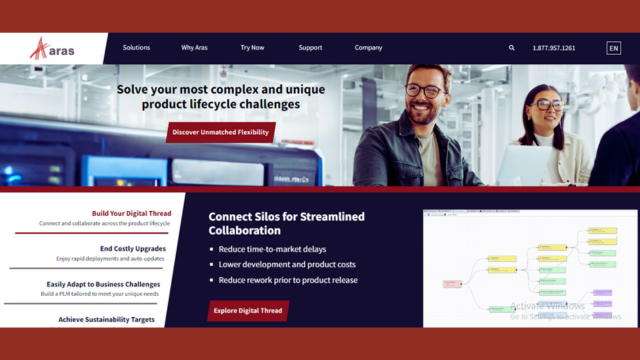
Aras Innovator stands out as a leading Product Lifecycle Management (PLM) software, offering a range of features that cater to diverse business needs.
Flexibility and Customization:
Aras Innovator excels in providing a highly flexible and customizable PLM platform. This adaptability allows businesses to tailor the system to their unique processes and workflows, ensuring optimal alignment with specific requirements.
Open Architecture:
With an open architecture, Aras Innovator facilitates seamless integration with other enterprise systems. This openness ensures compatibility and smooth data exchange, enhancing collaboration across different departments and functionalities.
Scalability:
One of Aras Innovator’s critical strengths is its scalability. The software grows alongside businesses, accommodating increased data volumes and evolving requirements. This scalability ensures that the PLM system remains effective and efficient as organizational needs expand.
Comprehensive Lifecycle Management:
Aras Innovator offers an extensive range of lifecycle management capabilities. The software covers the entire product lifecycle, from product design and development to manufacturing and maintenance. This comprehensive approach ensures businesses can manage every stage efficiently within a single, integrated platform.
Advanced Workflow Automation:
Aras Innovator excels in workflow automation, streamlining processes, and minimizing manual intervention. The software’s advanced capabilities enable businesses to define, automate, and optimize workflows, enhancing efficiency and reducing the likelihood of errors throughout the product lifecycle.
Aras Innovator’s flexibility, open architecture, scalability, comprehensive lifecycle management, and advanced workflow automation position it as a robust PLM solution. Businesses leveraging this software can expect a tailored, integrated, and efficient approach to managing their product lifecycles.
Pros:
1. Streamlines collaboration, enhancing communication across the product development lifecycle.
2. Provides robust customization options, tailoring the platform to unique business needs.
3. Supports complex workflows, ensuring efficient management of intricate product processes.
4. Promotes scalability, accommodating growth and evolving business requirements.
Cons:
1. Steeper learning curve for users due to its extensive capabilities.
2. Requires skilled administrators for optimal configuration and maintenance.
3. Limited out-of-the-box features compared to some PLM competitors.
4. Potential performance challenges with highly intricate and large-scale datasets.
Infor PLM
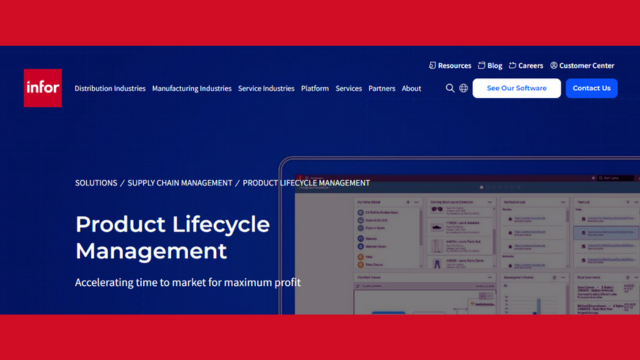
Infor PLM stands out as a leading Product Lifecycle Management (PLM) software, offering a robust suite of features to streamline and enhance various stages of product development. Here are five key advantages that make Infor PLM a standout choice:
Comprehensive Product Data Management (PDM):
Infor PLM excels in providing a comprehensive PDM solution, ensuring efficient handling, storage, and retrieval of product data. With intuitive interfaces and organized data structures, it facilitates seamless collaboration among teams, enhancing overall productivity and reducing errors in the product development lifecycle.
Advanced Workflow Automation:
A noteworthy strength of Infor PLM lies in its advanced workflow automation capabilities. The software allows organizations to define and automate processes, ensuring standardized procedures throughout the product lifecycle. This feature accelerates time-to-market and minimizes errors by enforcing consistent workflows.
Cross-Functional Collaboration:
Facilitating effective cross-functional collaboration is another standout feature of Infor PLM. The software breaks down silos by providing a centralized platform for teams across departments to collaborate in real-time. This collaborative approach fosters innovation, accelerates decision-making, and ensures all stakeholders are aligned throughout product development.
Regulatory Compliance and Risk Management:
Infor PLM prioritizes regulatory compliance and risk management, offering tools to track and manage compliance requirements throughout the product lifecycle. This proactive approach helps organizations navigate complex regulatory landscapes, mitigating risks associated with non-compliance and ensuring that products meet industry standards and regulations.
Analytics and Business Intelligence:
The inclusion of robust analytics and business intelligence tools sets Infor PLM apart. Organizations can leverage these features to gain valuable insights into product performance, market trends, and customer feedback. This data-driven approach enables informed decision-making, empowering businesses to adapt and optimize their product strategies in response to market dynamics.
In conclusion, Infor PLM is a comprehensive and robust solution addressing critical product development aspects. Its focus on data management, workflow automation, collaboration, compliance, and analytics positions it as a top choice for businesses seeking to optimize their product lifecycle management processes.
Pros:
1. Infor PLM streamlines product lifecycle with efficient collaboration and workflows.
2. Enhanced data accuracy ensures informed decision-making throughout product development phases.
3. Robust analytics and reporting tools provide insights for continuous improvement.
4. Cloud-based accessibility facilitates real-time collaboration and data availability.
Cons:
1. Initial setup costs can be significant for smaller enterprises.
2. A steeper learning curve may require comprehensive training for optimal utilization.
3. Customization complexities might pose challenges for non-technical users.
4. Integration issues may arise with specific third-party applications and systems.
Onshape

In Product Lifecycle Management (PLM) software, Onshape emerges as a frontrunner, offering features designed to streamline and enhance the product development process. Let’s delve into the five key advantages that make Onshape stand out in the competitive PLM landscape.
Real-Time Collaboration:
Onshape fosters collaboration by enabling real-time, cloud-based interaction among team members. It eliminates version control issues, ensuring that all stakeholders work on the latest iteration of the product model simultaneously.
Platform Agnosticism:
One of Onshape’s standout features is its platform agnosticism. It allows users to access and work on projects from any device with an internet connection. This flexibility enhances accessibility and promotes seamless collaboration, irrespective of the user’s hardware or operating system.
Built-In Version Control:
Onshape eliminates the complexities associated with version control by integrating a robust system directly into the software. I ensure every modification is tracked, making it easy to revert to previous iterations and enhancing overall project traceability.
Parametric Modeling Capabilities:
Onshape’s parametric modelling capabilities empower users to create intelligent and adaptable 3D models. This feature facilitates the creation of designs with dynamic parameters, enabling rapid iterations and modifications, ultimately speeding up the product development cycle.
Data Security and Accessibility:
Onshape places a premium on data security, employing advanced encryption and authentication measures to safeguard intellectual property. Simultaneously, its cloud-based structure ensures authorized team members can access project data securely from anywhere, fostering security and accessibility.
In conclusion, Onshape’s prowess as a PLM software lies in its innovative features and commitment to addressing the evolving needs of modern product development teams. The seamless collaboration, platform independence, version control, parametric modelling, and robust security measures collectively position Onshape as a powerful and reliable choice for organizations navigating the complexities of product lifecycle management.
Pros:
1. Onshape offers real-time collaboration, enhancing team productivity and efficiency.
2. Its cloud-based nature allows easy access to the internet from anywhere.
3. Onshape’s version control ensures accurate tracking and management of design changes.
4. The software’s intuitive interface facilitates quick learning for users.
Cons:
1. Onshape’s dependency on internet connectivity may pose challenges in remote areas.
2. Advanced features come with a learning curve for new users.
3. Limited offline capabilities may hinder work during internet outages.
4. Some users find the pricing model less cost-effective for small businesses.
Buying Guide For Best PLM Software
Choosing the best Product Lifecycle Management (PLM) software requires careful consideration of various factors to align with your business needs and objectives. Here are ten key factors to keep in mind:
Comprehensive Product Data Management (PDM):
A robust PLM system should offer advanced Product Data Management capabilities. t involves efficiently handling product information throughout its lifecycle, including creation, modification, and storage.
Collaboration and Communication Features:
Look for PLM software facilitating seamless collaboration and communication among team members, stakeholders, and external partners. This ensures everyone involved is on the same page, enhancing efficiency and reducing errors.
Integration Capabilities:
Opt for a PLM solution that integrates smoothly with other existing systems in your organization, such as Enterprise Resource Planning (ERP) or Customer Relationship Management (CRM) software. Integration streamlines processes and minimizes data silos.
Scalability and Flexibility:
Choose a PLM system that can scale as your business grows. Flexibility is crucial to adapting the software to evolving business needs, accommodating changes in product lines, and supporting future expansions.
Regulatory Compliance:
Ensure the PLM software complies with relevant standards for industries with stringent regulatory requirements. t includes regulations such as ISO, FDA, or other industry-specific standards, ensuring your products meet compliance standards.
User-Friendly Interface:
An intuitive and user-friendly interface is essential for widespread adoption within your organization. The easier it is for users to navigate and utilize the PLM system, the more effective it will be in optimizing workflows.
Advanced Analytics and Reporting:
Look for PLM software that provides robust analytics and reporting tools. These features enable data-driven decision-making by offering insights into product performance, project timelines, and resource allocation.
Change Management Capabilities:
Change is inevitable in product development. A PLM system should support effective change management, seamlessly incorporating modifications, updates, or revisions while maintaining data integrity.
Security Measures:
Data security is paramount, especially when dealing with sensitive product information. Ensure the PLM software incorporates robust security measures, including encryption, user access controls, and compliance with data protection standards.
Vendor Support and Reputation:
Evaluate the PLM software vendor’s reputation and customer support services. A reliable vendor with a history of providing excellent support ensures you have assistance when needed and that the software remains up-to-date.
Mobile Accessibility:
Accessing PLM data on mobile devices is crucial in today’s dynamic work environment. Look for software that offers mobile compatibility, allowing users to collaborate and access information.
Lifecycle Analytics:
Beyond basic analytics, consider PLM software, which provides in-depth lifecycle analytics. It involves analyzing data throughout the product lifecycle and offering insights into product performance, customer feedback, and potential improvements.
User Training and Support Resources:
Assess the availability of training resources and support materials the PLM software vendor provides. A comprehensive training program and readily available support resources contribute to smoother implementation and user adoption.
Environmental Sustainability Features:
If environmental sustainability is a priority for your organization, choose a PLM system that incorporates features for tracking and managing the environmental impact of products. It includes tools for assessing and optimizing the sustainability of materials, manufacturing processes, and supply chain practices.
Innovation and Upgradability:
Consider the software’s commitment to innovation and its history of regular updates and upgrades. A PLM system that stays current with industry trends and technological advancements ensures your organization benefits from the latest features and functionalities.
Supplier Collaboration Tools:
Evaluate the PLM software’s capabilities for supplier collaboration. Effective supplier collaboration is essential for streamlined communication, improved efficiency, and better control over the entire product lifecycle.
Compliance Monitoring and Auditing:
Look for PLM solutions that offer robust compliance monitoring and auditing tools. It includes features to track and ensure adherence to regulatory requirements, industry standards, and internal policies throughout product development.
Interoperability with Design Tools:
If your organization uses specific design tools (e.g., CAD software), check for the PLM system’s interoperability with these tools. Seamless integration enhances design collaboration and ensures that design changes are efficiently reflected in the PLM environment.
By carefully assessing these factors, you can make an informed decision when selecting the best PLM software for your organization, enhancing your product development processes and overall business efficiency.
Frequently Asked Questions About Best PLM Software
Product Lifecycle Management (PLM) software is an integral tool in managing a product throughout its lifecycle, from inception and design to production, service, and disposal. When considering Product Lifecycle Management (PLM) software, it’s common to have questions about its functionalities, benefits, and implementation. Here are ten frequently asked questions (FAQs) that shed light on various aspects of PLM software:
What is PLM software, and what does it do?
PLM software facilitates the management of product data, processes, and collaboration among different teams throughout a product’s lifecycle.
How does PLM software benefit businesses?
It streamlines product development, reduces time-to-market, enhances product quality, and optimizes collaboration among cross-functional teams.
Is PLM only beneficial for large enterprises?
No, PLM software can benefit businesses of all sizes by improving efficiency, reducing errors, and aiding in better decision-making.
What are the key features of PLM software?
Key features include product data management, version control, workflow automation, collaboration tools, and integration capabilities.
How does PLM software integrate with other business systems?
PLM systems often integrate with Enterprise Resource Planning (ERP), Customer Relationship Management (CRM), and other relevant systems through APIs or connectors.
What industries commonly use PLM software?
PLM software is widely used in manufacturing, automotive, aerospace, consumer goods, and healthcare industries.
How secure is PLM software in handling sensitive data?
Most PLM solutions offer robust security measures, including user authentication, access controls, encryption, and compliance with industry standards.
Can PLM software be customized according to specific business needs?
Many PLM solutions offer customization options to adapt to unique workflows and requirements.
What challenges might a company face while implementing PLM software?
Challenges may include resistance to change, integration complexities, data migration issues, and ensuring user adoption.
How can a company measure the ROI of implementing PLM software?
ROI can be measured through reduced time-to-market, decreased product development costs, improved quality, and increased revenue.
By addressing these FAQs, businesses can navigate the selection process more confidently and choose a PLM solution that aligns seamlessly with their operational needs and objectives.
These FAQs aim to comprehensively understand PLM software’s benefits, implementation considerations, and potential impact on various industries.
Final Thoughts
In conclusion, the world of Product Lifecycle Management (PLM) software is dynamic and ever-evolving, with several solutions vying for the title of the “best.” Navigating this landscape requires a nuanced understanding of an organization’s needs and priorities. The best PLM software is not a one-size-fits-all solution but a tailored tool that seamlessly integrates with a business’s unique workflows and processes.
As organizations strive for efficiency, innovation, and enhanced collaboration, the best PLM software provides a comprehensive suite of features. These may include robust data management, collaborative design tools, and seamless integration capabilities across the product lifecycle. Moreover, user-friendly interfaces and scalability are essential attributes, ensuring that the software adapts and grows alongside the organization it serves.
Furthermore:
1. InnoPLM Pro Suite: Empowers seamless product lifecycle management with advanced features.
2. OptiTech Nexus 360: Offers comprehensive solutions for optimized and efficient data management.
3. ProSync CollaboratePro: Facilitates collaborative project management with synchronized data-sharing capabilities.
The ideal PLM solution seamlessly integrates into existing workflows, enhances collaboration, and streamlines the entire product lifecycle. It should provide robust features like version control, change management, and comprehensive analytics. Ultimately, the best PLM software meets immediate business needs and adapts and scales with evolving requirements, positioning organizations for sustained innovation and competitiveness in the dynamic product development landscape.
In the quest for the best PLM software, decision-makers should consider vendor reputation, ongoing support, and the ability to meet industry-specific requirements. A successful PLM implementation can streamline processes, reduce time-to-market, and foster cross-functional collaboration. Therefore, the best PLM software is not merely a tool but a strategic asset that propels businesses toward innovation and competitiveness in today’s fast-paced global market.
Next Article: BEST Data Migration Tools

